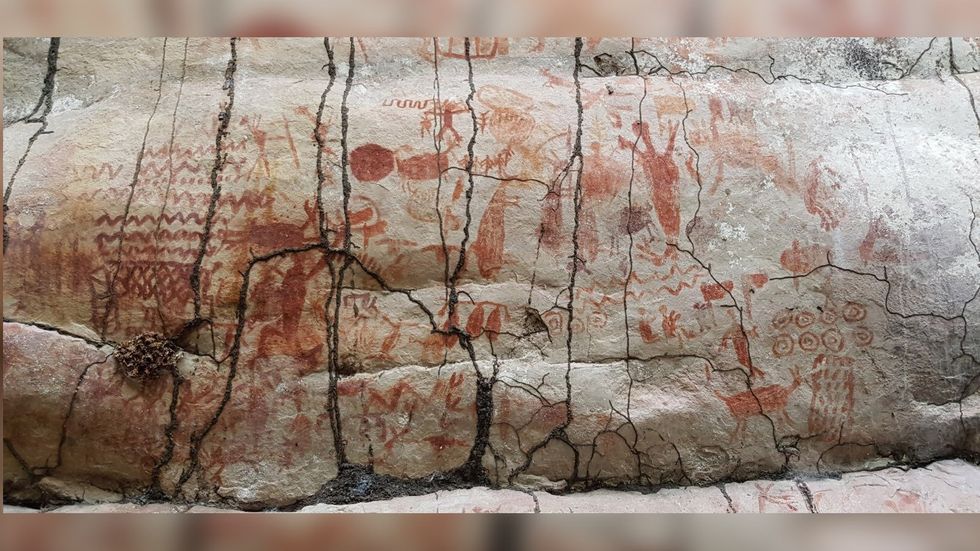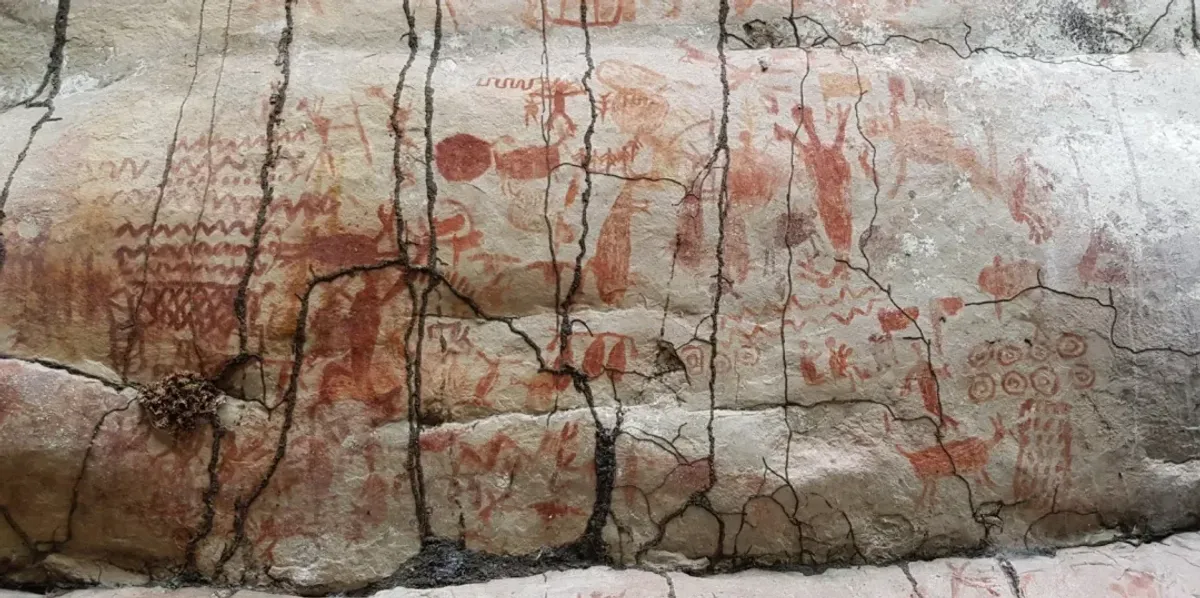Unearthing prehistoric art is exciting at the best of times, but when that art consists of eight miles’ worth of ice age paintings, it becomes the discovery of a lifetime.
Researchers in the Amazon rainforest uncovered an extraordinary “canvas” made up of drawings of mastodons, giant sloths and other extinct beasts, which is up to 12,600 years old.
The ancient artists used the red pigment ochre to create the monumental artwork, which spans some 13 kilometres (eight miles) of rock on the hills of the Colombian Amazon.
“These really are incredible images, produced by the earliest people to live in western Amazonia,” University of Exeter archaeologist Mark Robinson, who published a paper on the historic discovery in the journal Quaternary International,said in a statement.
Robinson and his team believe that indigenous people began painting these images at the archaeological site of Serranía La Lindosa, on the northern edge of the Colombian Amazon, towards the end of the last ice age.
The extraordinary paintings have been dubbed the ‘Sistine Chapel of the Ancients’(Marie-Claire Thomas/Wild Blue Media)
During this period, which occurred between 12,600 and 11,800 years ago, “the Amazon was still transforming into the tropical forest we recognize today,” Robinson said.
Rising temperatures changed the rainforest from a mishmash of savannas, thorny scrub and forest into today’s tropical landscape, as Live Sciencenotes.
The stunningly preserved ice age paintings include handprints, geometric designs and a wide range of different animals, from alligators, bats, monkeys and turtles to three-toed hoofed mammals with trunks.
Other figures depict scenes of humans hunting or interacting with the surrounding nature, including with a number of now-extinct species.
“The paintings give a vivid and exciting glimpse into the lives of these communities,” Robinson said.
“It is unbelievable to us today to think they lived among, and hunted, giant herbivores, some which were the size of a small car.”
Many of South America’s large animals died out at the end of the last ice age, most probably thanks to a combination of human hunting and climate change, the researchers noted.
 The paintings depict a wide range of creatures and scenes(Professor José Iriarte)
The paintings depict a wide range of creatures and scenes(Professor José Iriarte)
Robinson and his colleagues excavated the rock shelters in 2017 and 2018, as part of a project known as LastJourney.
This initiative aimed to discover when people first settled the Amazon, and what impact their activities had on the region’s biodiversity.
“These rock paintings are spectacular evidence of how humans reconstructed the land, and how they hunted, farmed and fished,” the study’s co-researcher and fellow archaeologist, José Iriarte, said in the same statement. “It is likely art was a powerful part of culture and a way for people to connect socially.”
A Channel 4 documentary on the finding, called ‘Jungle Mystery: Lost Kingdoms of the Amazon,’ aired in the UK in December 2020.
Sign up for our free Indy100 weekly newsletter
How to join the indy100’s free WhatsApp channel
Have your say in our news democracy. Click the upvote icon at the top of the page to help raise this article through the indy100 rankings

